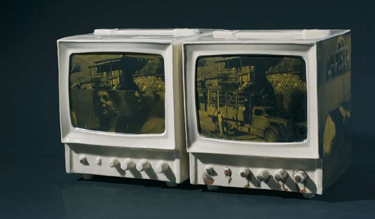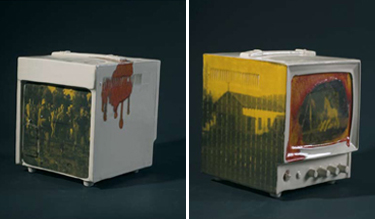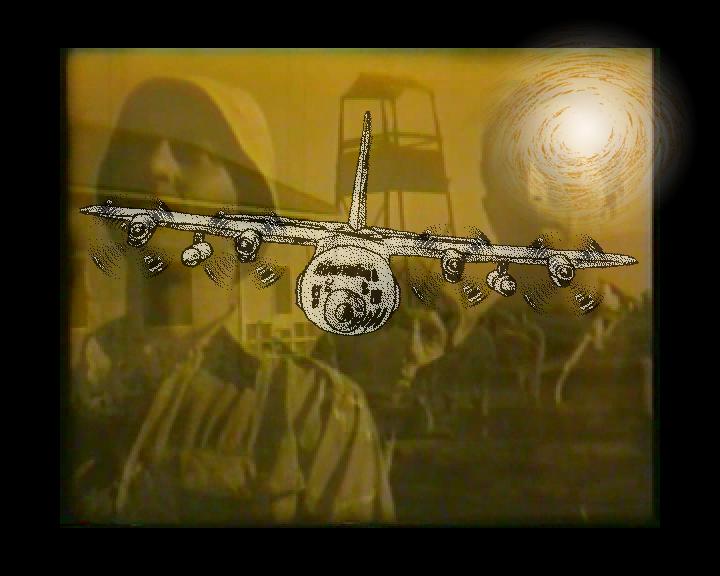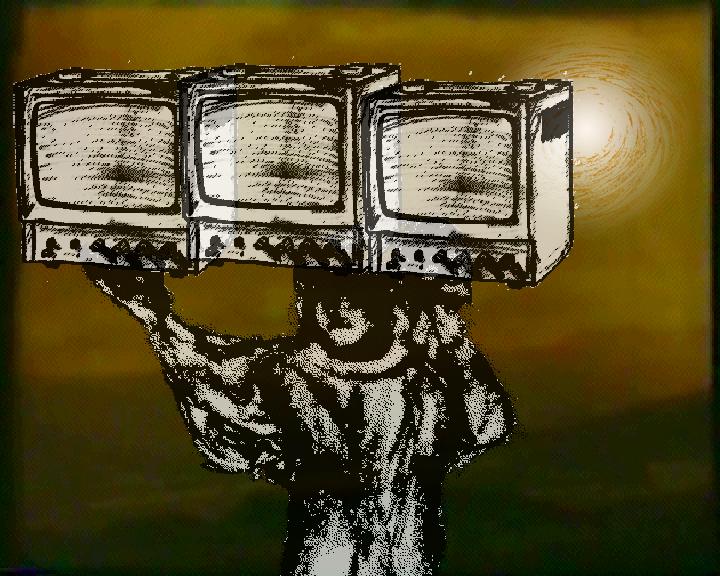Zochrot's art gallery opened with its premier exhibit "Channel AlDuwara" by ceramic artist Shlomit Bauman, with audio and animation work by guest artist Ariel Mioduser. Ceramic television monitors, installed throughout the exhibition space, broadcast images from the village AlDuwara, a Palestinian village that existed on the lands used today as agricultural fields by Kibbutz Amir, where the artist was born and raised. The images that appear on the television screens were taken from a film produced on the founding of the kibbutz.
About the exhibit
In the gallery space are installed 9-inch television sets, those typically used in control rooms. The televisions, neutralized in effect from their practical function, embody a space as well as a tool from which and in which broadcasts are emitted from the village AlDuwara. On the white televisions the artist imprints stains of red color, perhaps blood, perhaps nail polish, and through these continues to draw out her interest in the female body.
Images appear on the television sets, stills from the film 'For the Day Has Come' (1954) which tells the story of the founding of Kibbutz Amir. The story of the kibbutz is entwined in the story of the draining of swamps and the battle against malaria flies. AlDuwara is the name of the Palestinian village that existed in the Hachula Valley until 1948. Kibbutz Amir, the last kibbutz founded among the "wall and tower" settlements, was founded in 1939 next to the village. In May 1948 the village was destroyed and later its lands became the agricultural fields of Kibbutz Amir. The kibbutz where Bauman was born.
The video and sound work by Ariel Mioduser corresponds with the works of Bauman and creates a complex experience in the space. In the video, Mioduser interweaves segments from two films that were made at about the same time: The film that tells the story of the founding of Kibbutz Amir and another film on the founding of neighboring Kibbutz Dan. These are integrated with segments of animation. The animation is superimposed onto the films of the kibbutzim and in a certain way makes them abstract. Sentences echo out from the video, some that were spoken in the film on Kibbutz Amir and some that are not spoken in the film but rather in Bauman's own memory. One of the sentences that emerges from the video is a key phrase spoken in Bauman's voice: "Our good relations with our neighbors from the village AlDuwara." Bauman imagined – hoped – to hear this sentence in the film on the kibbutz. She remembered it there. The sentence is constructed anew into the film via the work of Mioduser and acquires a material place beside the buzzing of flies from the valley.
The exhibit Channel AlDuwara is composed of different materials. Concrete material - the ceramic substance, the reality that cannot be evaded - and the virtual material that is elusive - memory that falls apart, the screening of the video, the voices. Between these materials - the substantive material, the ceramic body, and the virtual material, the memories that are (constantly) constructed anew - a different, new dialogue develops into the space, a dialogue that challenges the Zionist story of the founding of the kibbutz, that points at its fissures. The exhibit suggests a dialogue between our reality, in which the name AlDuwara has faded away, has almost completely disappeared, and the recollections of Bauman which are composed of the buzzing of memories on the good relationship with the neighbors from the village AlDuwara. Bauman's encounter with AlDuwara is an intimate encounter, the encounter of someone who comes from the same place, of someone who shares a close physical experience.
Shlomit Bauman tries to open a broadcast, a channel of communication to AlDuwara, and thus to follow its beam emitting from the village. But the village itself is absent from the exhibit. Bauman does not come to tell us the story of the village and its residents, but to point to its absence. In this way, the exhibit reconstructs the collective amnesia. The channel that Bauman opens leads her in fact back to the kibbutz and to Israeli society, and situates her in a civil position vis-à-vis the fading memory of the village, a civil position that demands accountability. Because the day has come, Bauman says through the exhibit, to remember, to see, and to hear the broadcasts from AlDuwara.

ערוץ אלדוארה, ללא כותרת / Channel alDuwarra, Untitled / 1

ערוץ אלדוארה, ללא כותרת / Channel alDuwarra, Untitled / 2

ערוץ אלדוארה, ללא כותרת / Channel alDuwarra, Untitled / 3

ערוץ אלדוארה, ללא כותרת / Channel alDuwarra, Untitled / 4


